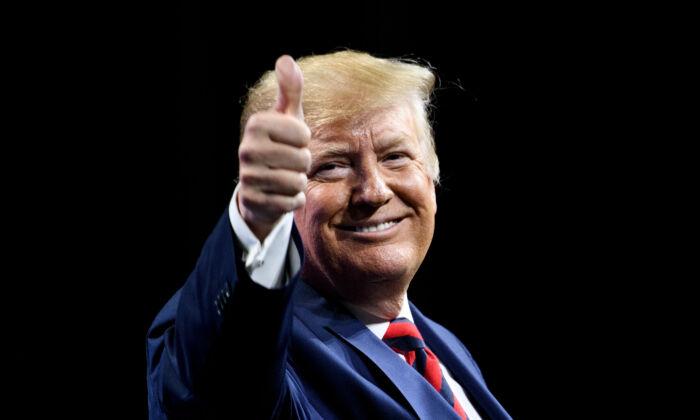China confirmed that a trade deal with the United States was nearing completion on Oct. 29, a day after U.S. President Donald Trump said the two sides were ahead of schedule to sign a “phase one” deal.
Meanwhile, the White House denied an Oct. 29
report by the South China Morning Post, which cited an anonymous source who said Trump and Chinese leader Xi Jinping would meet in Chile during November’s Asia-Pacific Economic Cooperation (APEC) summit to sign the deal “if everything goes smoothly.”
Trump has said that he hopes the two sides can finalize the deal during APEC.
China’s Response
“Negotiation team leaders from the U.S. and China held a phone call on Oct. 25, in which they agreed to solve their key concerns and confirmed that the technical discussion on the text of the trade deal is basically completed,” Geng Shuang, spokesman of China’s Foreign Affairs Ministry,
said at a daily press conference on Oct. 29.
Geng said the negotiation leaders would hold another phone call in the near future, but didn’t say when the text is expected to be finalized.
China’s state-run media Xinhua previously
reported the contents of the phone call: “The U.S. agreed to import China-produced cooked poultry and catfish products, while China agreed to lift the ban on American poultry products.”
The report stated that U.S. Trade Representative Robert Lighthizer and Treasury Secretary Steve Mnuchin were representing the United States, while Chinese Vice Premier Liu He, Commerce Minister Zhong Shan, central bank governor Yi Gang, and National Development and Reform Commission (NDRC) Vice Chairman Ning Jizhe represented China.
‘A Big Portion’
During Liu’s visit to Washington, Trump
announced on Oct. 11 that the United States reached a partial trade agreement “in principle” with China, on intellectual property, financial services, and agriculture. Trump said Beijing had agreed to purchase “up to $40 billion to $50 billion” of agricultural products from the United States.
On Oct. 28, Trump
told reporters at Joint Base Andrews in Maryland: “We are looking probably to be ahead of schedule to sign a very big portion of the China deal, we’ll call it phase one, but it’s a very big portion.”
Trump said the deal “would take care of the farmers. It would take care of some of the other things. It will also take care of a lot of the banking needs.”
That same day, the Office of the United States Trade Representative (USTR)
released an announcement that the agency was considering extending an exclusion it had granted to certain U.S. applicants, which would exempt them from 25 percent tariffs on a list of roughly 1,000 types of Chinese goods. The exclusion is due to expire on Dec. 28. The USTR announced that it’s seeking public comment on a 12-month extension.
Key Facts
After Trump announced the phase one agreement, the Chinese regime didn’t
confirm the news until four days later.
Meanwhile, Beijing hasn’t yet provided details on the agricultural products it will buy from the United States.
Earlier on Oct. 24, Bloomberg
reported that the Chinese had backtracked and said it would buy $20 billion of U.S. agricultural products in the first year after the partial deal is signed. Then, in the second year, China would consider buying $40 billion to $50 billion of U.S. goods, depending on whether the administration would remove the current punitive tariffs.
Meanwhile, on Oct. 29, China’s Commerce Ministry promised to ban authorities from requiring foreign companies to transfer their technology in exchange for market access. Beijing would also ease restrictions on foreign firms in some newly opened finance businesses, the ministry stated.
Despite the measures, many foreign firms are still pressured to enter into joint ventures with Chinese partners.
In the two years since the trade dispute between the world’s two largest economies began, the Chinese regime—in goodwill gestures to appease the United States—has launched new policies to open its markets to foreign companies. It first
allowed foreign securities firms to own more than 50 percent of its joint ventures in April 2018, followed by an
announcement on Oct. 11 allowing full foreign ownership of futures traders beginning on Jan. 1, 2020. In April 2020, the mandate would apply to mutual fund companies, followed by securities firms on Dec. 1, 2020.
Observers say the Chinese regime was pressured to make these changes because of its poorly performing economy, which is in need of more foreign investment.





